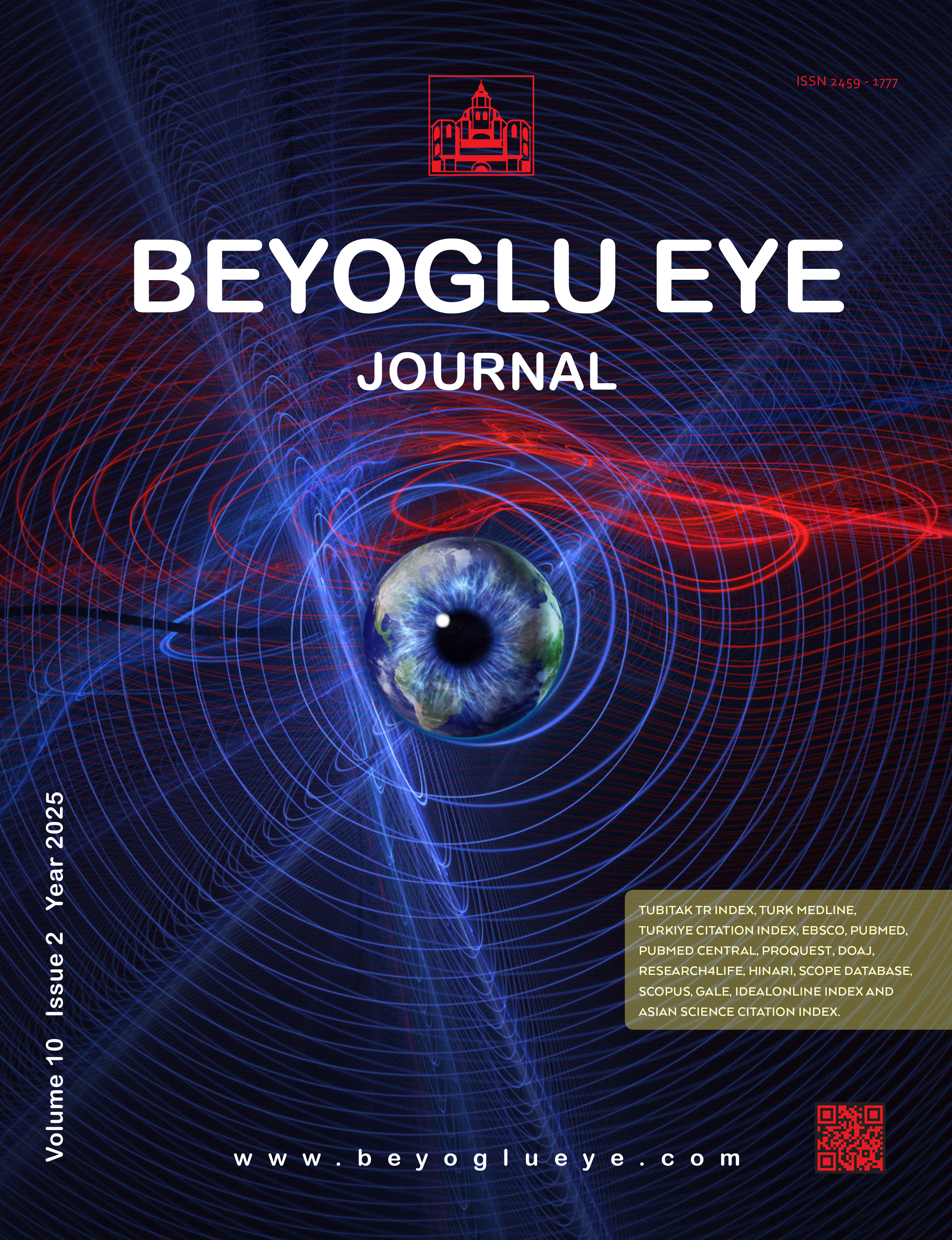
Can Serum Biomarker Values from Second-Trimester Aneuploidy Screening Predict the development of Retinopathy of Prematurity in Premature Infants?
Senol Sabanci1, Mehmet Fatih Kucuk1, Hasan Basri Savas2, Elcin Suren1, Muhammet Kazim Erol1, And Yavuz3, Haydar Sipahioglu41Department of Ophthalmology, Antalya Training and Research Hospital, Antalya, Türkiye2Department of Biochemistry, Mardin Artuklu University, Medical Faculty, Antalya, Türkiye
3Department of Gynecology and Obstetrics, Antalya Training and Research Hospital, Antalya, Türkiye
4Department of Gynecology and Obstetrics Ministry of Health Alanya Alaaddin Keykubat University Alanya Training and Research Hospital, Antalya, Türkiye
OBJECTIVES: This study aimed to evaluate serum biomarker values measured during second-trimester aneuploidy screening in terms of their predictive ability for the development of retinopathy of prematurity (ROP) in premature infants.
METHODS: This retrospective cohort study evaluated the data of 1985 idiopathic premature infants who underwent ROP screening from 2016 to 2022. The infants were divided into two groups according to the presence of ROP, and those with ROP were further evaluated in two subgroups based on the presence of proliferation. Comparisons were made concern-ing the serum multiple of the median values of unconjugated estriol (uE3), human chorionic gonadotropin (hCG), and alpha-fetoprotein (AFP) among aneuploidy screening biomarkers.
RESULTS: While 1628 premature infants were in the non-ROP group, 357 were in the ROP group. Of the infants with ROP, 72 were in the proliferative ROP group and 285 in the non-proliferative ROP group. There was no significant difference in the multiple of the median values of the evaluated serum biomarkers (uE3, hCG, and AFP) between the ROP and non-ROP groups or between the proliferative ROP, non-proliferative ROP, and non-ROP groups.
DISCUSSION AND CONCLUSION: The multiple of the median values of second-trimester aneuploidy screening serum biomarkers were not able to predict the development of ROP in premature infants. This result may have been caused by the fact that the blood tests were taken only once and in the same weeks.
Manuscript Language: English








